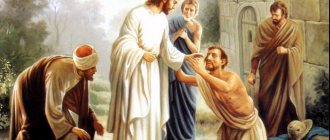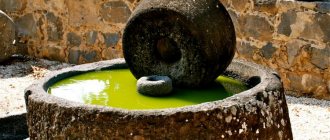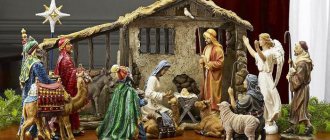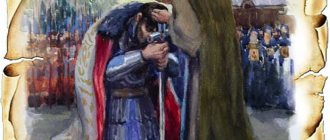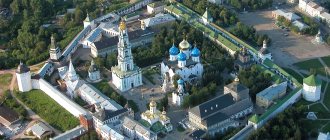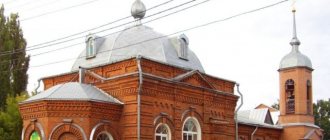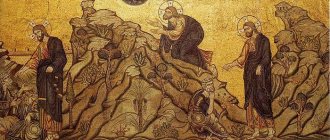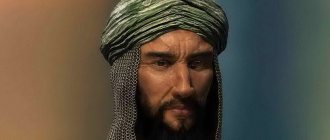- July 23, 2019
- Attractions
- Olga Strelkova
The origins of biblical archeology date back to the 4th century, the era of the Byzantine emperor Constantine and Helen, the king's mother. At that time, they began to actively explore the Holy Land in order to touch both the gospel events and sacred history in general. In Eusebius of Caesarea you can read about a powerful program to recreate the Holy Land. Its implementation led to the study of the most important corners of the globe, including the place where Jesus was born.
Prophet Micah's prediction
What do we know about the country where Jesus Christ was born? The Holy Scriptures say that this was Judah, or the kingdom of Judah. Its capital was Jerusalem. It was formed in the 10th century BC. e., after the kingdom of Israel of David and Solomon collapsed. It included the lands of such tribes as Judah and Simeon, as well as half of Benjamin.
What does the Holy Scripture say about the locality where Jesus Christ was born? In what city did this happen? This is narrated in the prophecy of Micah, more than seven centuries before the birth of the Savior. Evangelist Matthew recalls the words of Micah. King Herod, concerned by the message of the Magi that the King of the Jews had been born, demanded that Bible interpreters name the exact place.
In response, experts gave him a quote from Micah, which spoke about the city in which Jesus Christ would be born. It spoke about Bethlehem. There are two versions of the translation of this name from the Hebrew language, depending on the spelling - “house of bread” and “house of meat”.
Birth of Jesus Christ
Jesus was born in darkness. At night, the Virgin Mary gave birth to a child. According to the Gospel, the part that Luke wrote, the young mother placed the child in the nursery, and just at that moment the cave was flooded with a bright light coming from a cloud that appeared out of nowhere.
The text of the apocryphal Gospel also says that the firstborn Messiah was recognized by a donkey and an ox in a stable. This became clear when they bowed to him.
The news of the birth of the Savior spread throughout the city by local shepherds, who that night were near their flocks near Bethlehem. This message was conveyed to them by the Angel himself, who appeared before them in a dazzling light to tell people about the birth of the Messiah.
At this time, the Magi arrived from the eastern lands to Jerusalem, which was then the capital of the Kingdom of Judah. One of them traveled a long way just to be able to worship the newborn Son of God, the future King of the Jews. He found the right path to the Messiah only thanks to the bright star that appeared in the sky at the moment of little Jesus’s first breath.
This Christmas star led the wise men to Bethlehem. For some time he remained on the roof of the new house of Mary, Joseph and the Son of the Lord, the house which all three entered as they left the cave.
Before the newborn Jesus, the wise men fell to their knees. They brought him many gifts: gold, frankincense and myrrh, which respectively symbolize the kingdom, divine purpose and the brevity of human life. This event marked the beginning of the good tradition of exchanging gifts with loved ones at Christmas.
It is interesting that scientists have not established the exact date of birth. Astrologers, theologians and historians are still working on this issue. Their views were divided. It is unlikely that they will come to an agreement in the future, as many studies show.
Most of them highlight this time interval - 12-7 years BC. 12 AD is associated with Halley's Comet as it passes through perihelion. It was this that, according to some scientists, the Magi called the Star of Bethlehem.
As for the 7th year, it was chosen to coincide with the only documented ancient census. There is another option: 4 BC, when Herod the Great was born, who, according to legend, organized the massacre of children on the birthday of Jesus.
As for the direct birthday of the Messiah, in Catholicism it falls on December 25, and in Orthodoxy it falls on January 7. The numbers are different, since representatives of these Christian denominations use different calendars (Gregorian and Julian).
Two Bethlehems
From the events described in the Gospel, it is known that Joseph the Betrothed and the Virgin Mary lived in the north of Galilee, in Nazareth, while Joseph came from the tribe of Judah. At the time, the Roman Empire was conducting a large-scale census, and the family went to Bethlehem to be registered.
And here there is a contradiction regarding the city where Jesus Christ was born. The fact is that there were two Bethlehems. One of them was in the north, near Nazareth, and the other in the south. Thus, to get to the city, located in the south, it was necessary to go towards Hebron through the entire Holy Land.
In this regard, a number of interpreters of the holy books have formed the opinion that the assumption about northern Bethlehem will be closer to the truth. They decided that this was most likely the place where Jesus was born. However, in this case, the correct option was suggested by studying the historical context.
Good News of the Birth of the Messiah
The Annunciation is the most important holiday for all believers. Belonging to the 20s of the twentieth century, it is closely connected with the life of Mary, chosen by the Most High as the mother of the Son of God. The story of how the purest virgin learned of her fate is not known to everyone. This is necessary for a better understanding of Christianity.
Maria was born into the family of preachers Anna and Jokim. His family lived in Bethlehem. It was here, at the age of 12, that a girl faithful to the Lord gave him a vow of eternal virginity. Later she was married off. The godly man was Joseph of Nazareth, an old man whom everyone, including Mary herself, treated with respect. He himself answered his wife, since Joachim is mentioned in his genealogy, who gave birth to Jeconiah and his brothers before Babylon became their home. After Jeconius settled in Babylon, he continued his lineage. 12 generations shared him with Joseph, who became the guardian of the virginity of the Most Pure One.
One day Gabriel came to the Mother of God. The archangel who appeared to her brought the good news that she was chosen as the mother of the Savior. Thus, Mary knew that she was destined to bear a child conceived by the Holy Spirit. At the same time, the Messenger of the Lord named the purest and most accurate date of birth of the child.
This event, as we know, was preceded by the decision of Augustus, who at that time ruled the kingdom of Judea, to conduct a population census. According to the order of the Roman emperor, everyone had to “register” at the place of residence of his family.
Joseph and Mary were forced to go to Bethlehem, where their ancestors lived. Here, as stated in the Old Testament prophecies, the Messiah was destined to be born. And so it happened. The Virgin Mary and her husband could not find free space in the hotels of the city, so they were forced to stay in a cave, which the shepherds turned into a stable.
Ancient evidence
Ancient texts tell about the true circumstances of the census. Thus, in the British Museum there is an order on papyrus numbered 904. Although it dates to a later period (around 104 AD), it describes a similar situation, since censuses were carried out regularly.
The document states that all people should be registered only in the place of their birth. The prefect of Egypt, Guy Vibius Maximus, gave orders that it was necessary to force everyone who, for one reason or another, was outside the borders of their province, to return to their own homes. This is so that they can comply with the requirements of normal census law.
After all, Jewish Bethlehem
It follows that, fulfilling the orders of the Roman authorities regarding the census, Joseph the Betrothed should have gone to the south of Judea. After all, its origin goes back to the descendants of King David. This means that when it comes to the place where Jesus was born, we mean Bethlehem, located in the south, in Judea.
The version regarding the population census is set out by the Evangelist Luke. Matthew says that Joseph and Mary went to Bethlehem to escape King Herod, who ordered the extermination of all infants. Despite this discrepancy, in both cases the city and country where Jesus Christ was born are indicated in the same way.
Joseph had to flee to Egypt with Jesus and Mary
Joseph was a devout Jew and therefore on the eighth day after his birth Jesus was circumcised. On the fortieth day, a sacrifice took place in the Jerusalem Temple. Thus, it turns out that the Magi arrived in Bethlehem only after these events had occurred.
Flight to Egypt, Gintiele da Fabriano, 1423. The Holy Family had to flee to Egypt from the massacre of the infants, which King Herod carried out in Judea
At that time, Judea was directly ruled by King Herod, who was subordinate to the Roman emperor. Hearing that the Messiah was born, he was afraid.
Since he did not know where exactly this happened, he ordered the killing of all babies in Bethlehem whose age did not exceed two years. Jesus was saved from death by the Angel of the Lord, who commanded Joseph to flee with his family to Egypt. Here they lived until the death of Herod.
Historical reference
The first mention of the city is found in the Amarna archive and dates back to 1350-30 BC. e. It was then in the possession of the Canaanites. According to the book of Kings, this is the birthplace and anointing of David. In this regard, the city is also called the city of David. And due to the fact that, according to the Gospel, this is the place where Jesus Christ was born, Christians consider it second in holiness, after Jerusalem.
In the 2nd century, during the Bar Kokhba revolt, Emperor Hadrian destroyed the city. Constantine the Great's mother, Empress Helena, contributed to his revival. In 327, she ordered the Church of the Nativity of Christ to be built here. In 529 the shrine was damaged by the Samaritans. They robbed her during the uprising. Later, Emperor Justinian I rebuilt the church.
In 637, Muslims conquered Bethlehem. Their rule lasted until the city was conquered by the Crusaders in 1099. They replaced the local Orthodox clergy with Latin ones. In the 13th century, the city walls were destroyed by the Mamluks and rebuilt in the 16th by the Ottomans. Power was transferred from the latter to the British after the 1st World War. In 1948, the city was occupied by Transjordan during the Arab-Israeli war. And later, in 1967, Israel, during the six-day war. According to the Oslo Accords, Bethlehem has been governed by the Palestinian Authority since 1995.
Bethlehem was destroyed twice and was rebuilt
The City of Jesus is one of the most ancient cities on Earth. It was founded in the 17th-16th centuries AD. Previously, this area belonged to the land of Canaan. Initially, Canaanites lived in Bethlehem; later Jews took their place.
Saints Constantine and Helen. Mosaic fragment. Saint Helena ordered the demolition of the pagan temple of Adonis in Bethlehem and the erection of a Christian church in its place.
During Roman rule, there was a sanctuary to Adonis in the city. It stood on the site of the Nativity of Jesus Christ. The temple was erected after the end of the second between Rome and Judea in the 2nd century.
The pagan temple was demolished only in 326 by order of Saint Helena, the mother of the first Christian emperor Constantine. She put a Christian church in its place.
The Church of the Nativity was destroyed by the Samaritans during their uprising. In 529, Emperor Justinian the Great restored it. The Persians, who captured the city in 614, spared the Temple.
In 637 it was already captured by Muslims. Umar ibn Khattab, the second caliph of Islam, decided to leave the Temple to Christians.
The city today
Today Bethlehem is a city located near the Jordan River, on its western bank. It is controlled militarily and civilly by the Palestinian National Authority. It is the capital of the province of the same name and a center of tourism and pilgrimage. Ten kilometers north of it is the city of Jerusalem. The area of Bethlehem is about 6 km, the population is about 25 thousand people.
Today, Bethlehem is a predominantly Muslim city. However, it is still home to a large part of the Palestinian Christian community. The economic development of this place occurs mainly through tourism. It reaches its peak during the Christmas season. At this time, for 2 thousand years, Christians have been making a pilgrimage to the Holy Nativity Scene.
The Church of the Nativity was built over the cave where Jesus was born, according to legend. In fact, this building is a combination of two churches. The birthplace itself is located below and is called the Cave of the Nativity or the Cave of the Manger, the Holy Nativity Scene, the Grotto of the Nativity. In the sources that have reached us, the temple is mentioned around the year 150. The underground part was built during the time of Empress Helena. It belongs to the Jerusalem Orthodox Church.
Bethlehem was controlled by the Crusaders and Ottomans
Muslims reigned in the Holy Land for a long time. The rulers of Christian Europe were outraged by this. Pope Urban II organized the First Crusade in 1095.
The crusaders set their goal to liberate the three main cities in Christianity: Jerusalem, Bethlehem and Nazareth.
Pope Urban II preaches the first crusade in Clermont Square. Francesco Hayez, 1835
Pope Urban II initiated the First Crusade, the purpose of which, among other things, was to recapture Bethlehem from the Muslims.
The goal of the campaign was achieved in four years. All named cities are included in the Kingdom of Jerusalem. It ceased to exist only in 1291. Jerusalem, however, was recaptured from the Crusaders by Saladin at the end of 1187.
The Crusaders repeatedly tried to take Jerusalem back. It is worth noting that Saladin and his descendants were tolerant of Christians and gave them free access to the Holy Land.
Since 1517, the Holy Land, Jerusalem and Bethlehem were owned by the Ottomans. This rule lasted until the collapse of the Ottoman Empire at the end of the 19th century. At this time, pilgrims could have access to shrines.
Unfortunately, many of them died on the way to them. This was due to difficult climatic conditions and attacks by robbers.
Christmas place
It is marked by a silver star embedded in the floor. It was once gilded and decorated with precious stones. It has fourteen rays and is a symbol of the Star of Bethlehem. Inside it there is an inscription in a circle, which, translated from Latin, means that here the Virgin Mary gave birth to Jesus Christ.
The ancient star was stolen by unknown people in 1847. Most likely they were Turks. And the one that is now located at the birthplace of Jesus Christ was made in exact accordance with the ancient model and strengthened, according to the instructions of Abdul-Mejid I, the Sultan, with the funds allocated to him.
In a semicircular niche located above the star, sixteen lamps hang, which are distributed among the denominations as follows. Six are Orthodox property, four are Catholic property, and another six belong to Armenians. Behind the lamps, on the wall in a niche, small Orthodox icons hang in a semicircle. Behind the star, near the wall on the floor, there are two more glass lamps.
Directly above the Nativity site itself there is a marble throne, on which representatives of the Orthodox and Armenian churches perform the liturgy. When the service is not being performed, it is covered with a removable grille. There are also six small Orthodox icons on the wall behind the throne.
What do you feed your soul?
When you feed on Christ, you are satisfied with Him and have fellowship with God. The first date always takes place over food. When you eat together, a connection is established. This is how we form a connection with God while eating. Communion is one of the ways of communication. But the main thing is saturation with Christ.
Why did Jesus say, “I am the bread of life”? What do you do with the bread? Eat.
Why are there so many deaths around? Why are there so many diseases? Where does bankruptcy come from?
Because Adam ate from the wrong tree. Start eating from the right tree. You can live in Heaven if you feed on Christ.
Christ is heavenly food. Hallelujah!
Christ's manger
To the left of the entrance, in the southern part of the cave, is the chapel of the Manger. This site is run by Catholics. It resembles a small chapel, approximately two by two meters. The floor level in this aisle is slightly lower; two steps lead into it. To the right of the entrance is the place of the manger in which Jesus was laid immediately after birth. In fact, the manger used to be a feeding trough for livestock. They were used by the Virgin Mary as a cradle.
The interior of this manger was taken to Rome as a great shrine and placed in the church of Santa Maria Maggiore. This happened in the 7th century, during the time of Pope Theodore I, a few years after the Muslims captured the Holy Land. Perhaps this was done to prevent desecration of the shrine.
Part of the manger that remained in Bethlehem was covered with marble, and today it looks like a recess in the floor, which is arranged like a cradle. Five lamps burn above him and do not go out. Behind the wall stands an image of the Bethlehem shepherds worshiping the Child.
On the left side of the entrance to the nursery chapel there is the throne of the Adoration of the Magi, which belongs to Catholics. So it is named after the altarpiece depicting the worship of the Magi to Jesus.
Origin of the cave
It is likely that the oldest direct written evidence that has reached us about the cave as the birthplace of the Savior is the record of St. Justin the Philosopher. It is contained in his work entitled “Dialogue with Tryphon the Jew,” which was written between 150 and 155. According to him, the Holy Family found refuge in a cave located near Bethlehem.
There is no information about who owned this cave. Apparently, it had a natural origin, and was later adapted for household needs, and among other things, for keeping livestock. In the city of Bethlehem, many old buildings are built over caves located in limestone rocks, which are the first floors. They were used to house animals until the mid-20th century. It is possible that Jesus Christ was born in such a cave.
The situation in Bethlehem is currently turbulent.
During the First World War, Bethlehem was occupied by the British. In 1922 the city became part of British Palestine. In 1947, the State of Israel was founded. The so-called “Greater Jerusalem” was formed under the jurisdiction of the UN.
It included Jerusalem and Bethlehem. Further, the city of Jesus itself and East Jerusalem were first captured by Jordan, and then returned to Israeli control during the Six-Day War.
Separation wall and checkpoint between Jerusalem (Gilo) and Bethlehem. View from the Israeli side. In modern times, Bethlehem is the subject of a dispute between the state of Israel and the Palestinian Authority.
Currently, the ownership of Bethlehem, as well as the West Bank of the Jordan River, is a matter of dispute between Israel and the Palestinian Authority. As a result, a turbulent situation is maintained in the city. This caused an outflow of population.
So in 1940, the inhabitants of the city were mainly Christian Arabs, who made up 90% of its population.
After Christians began to emigrate en masse from Palestine and the Middle East to Western Europe and America in the second half of the twentieth century, no more than 20% of them remained in the city.
